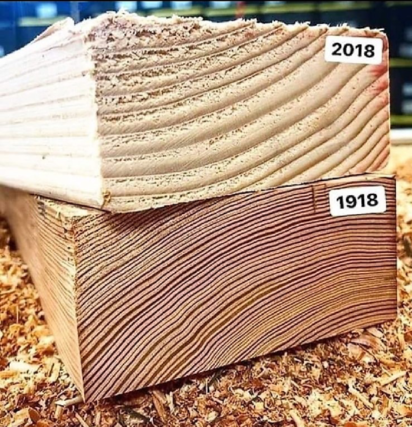To be frank, that’s the fault of most of the worlds forest management systems. You get what the article calls „new wood“, when you raise trees in open spaces. There they can rapidly expand and grow, and be felled early on. If you see forestry as plantation circles, which most of the world still does with those enormous clear cuts, you will get this kind of growth. However, if you raise forests in a more adaptive model with focus of the individual tree and a constant management, you can still manage to produce wood that is like the „old growth“ shown here. The trick is to keep the natural development of the forest in a stasis, where you take out just enough trees to promote the sprouting of new trees, but can control the rate at which they grow. This varies of course from species to species. Ideally, you have a specialist administrating the process and monitoring the appropriate amount that can be felled.

